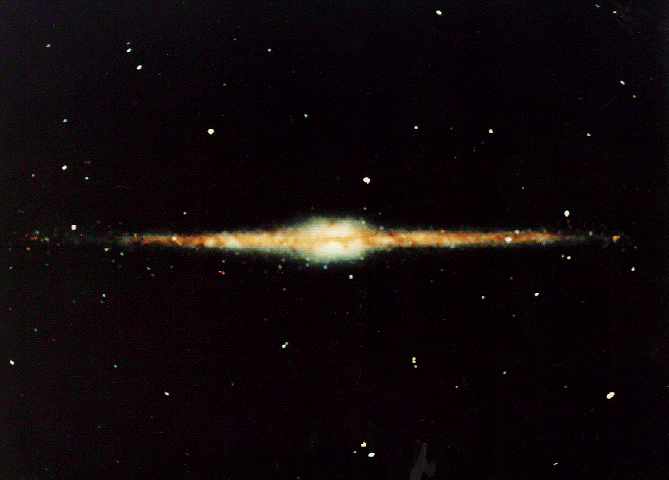
Central questions for our study of :
ASTRONOMY
How does astronomy impact our everyday lives?
What is the Earth's position in the universe?
How can we learn more about the universe if everything is so distant?

This picture is of a galaxy which probably looks similar to ours, if we were able to view it from this angle.
Common Astronomy Misconceptions
(However--any Newtown High School student can give you the scientifically accepted explanation)
MISCONCEPTION |
SCIENTIFICALLY ACCEPTED EXPLANATION |
| The earth's orbit is highly elliptical (not like a circle). | The earth actually has an eccentricity of only 0.0167; where a perfect circle equals 0 and a parabola equals 1. Thus, it's orbit is almost a circle. |
| The sun burns fuel for its energy. | The sun is a mass of incandescent gas; a gigantic nuclear furnace, where hydrogen is built into helium at a temperature of millions of degrees. (Special thanks to the musical group They Might Be Giants) |
| Stars last forever. | Stars go through a life cycle where they are born from large clouds of gas and dust, and depending upon their size, will end up as black dwarfs, neutron stars or black holes. |
| Black holes are big holes in space. | Black holes are dense collections of matter, such that the gravitational pull towards the center of mass exceeds the speed of light, thus they aren't visible. Evidence suggests that they are created when a massive star explodes. |
| The moon's phases are caused by the earth's shadow on the moon. | Moon phases are a result of the relative positions of the earth, moon, and sun. We (on earth) have a limited view of the moon, such that we can only see the illuminated portion of the moon that faces towards us. As a result, we see the moon in different phases, depending upon it's position. |